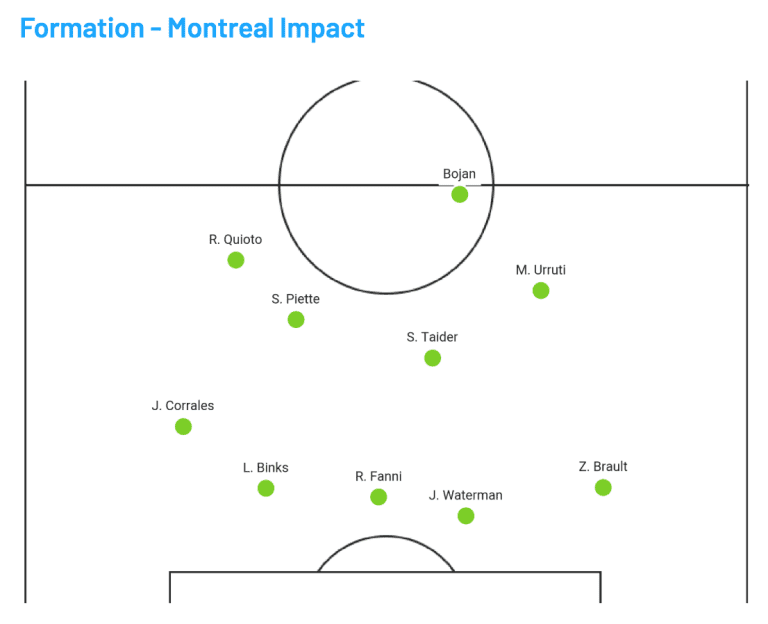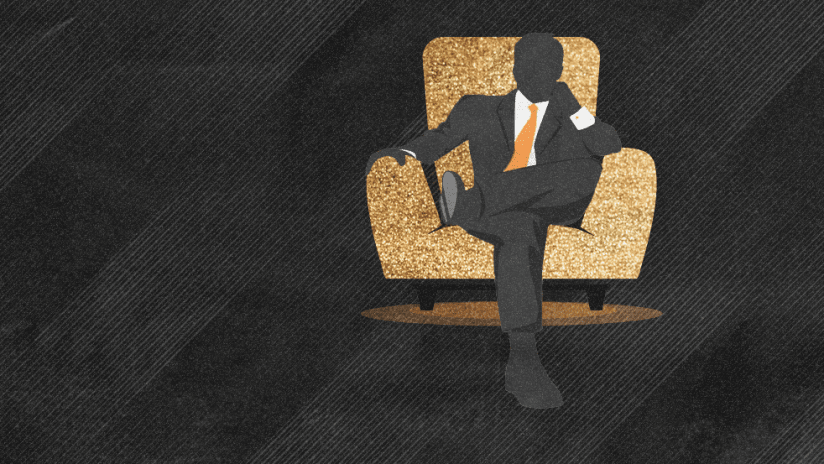Week 1 of the 25th MLS season is in the books. You've probably seen all the golazos (a stunning amount, to be honest), mourned the season-long loss of the league's best center forward and either celebrated or cursed your team's fortunes. The stuff that makes the headlines does so for a reason.
But there are layers to this wonderful game of ours. Let's peel a couple back to note players who didn't make headlines, but did make a difference:
Eloy Room
You're probably wondering why the Columbus Crew's goalkeeper is here since he didn't have much to do during their 1-0 win over NYCFC. Just three saves, only 13 total passes (11 complete) and a great vantage point to watch a game that was mostly played in the lap of his counterpart, Sean Johnson.
But the reason Eloy Room didn't have much to do is because he did so much with his first chance to influence the game. Room recognized early that his team's overload in possession and off-the-ball movement from Gyasi Zardes had dragged Maxime Chanot two steps too far from Lucas Zelarayan and opened a sliver of a passing lane. Then, his pinpoint distribution put Chanot in a no-win situation. Here's how it looked in real time:
You get a decent sense of how good Room's distribution was from the clip.
You get a better sense of how good, quick, incisive and purposeful that distribution is from the below clip, courtesy of our new partnership with Second Spectrum:
Chanot has a panic attack nine seconds into that clip because Columbus has dragged Alex Callens, his center back partner, all the way out to the touchline in an attempt to close down Harrison Afful. Zardes is also a threat to spin into space behind James Sands, a defensive midfielder who'd dropped into the backline in place of Callens.
Chanot drifts hard that way, and you can see that leaves Zelarayan all by himself just as the ball is being played back to Room. The chance to make a game-changing play is there as long as Room sees it and executes without hesitation.
Long balls are sometimes beautiful.
Frankie Amaya
Coming into MLS last season, Frankie Amaya was supposed to be a No. 10, but the teenager had real trouble changing the game with his passing and didn't seem to have the type of vision necessary to run the show from central midfield. That really hasn't changed a year later – Amaya's yet to be a dangerous progressive passer.
But he's a valuable part of what FC Cincinnati should be trying to do nonetheless, because it turns out the dude is a pit bull. Each one of these clips is either of Amaya pressuring the ball or winning it outright:
- Clip 1: He challenges (loses) a 50/50, then closes down a shot in the span of three seconds.
- Clip 2: He forces Cristian Casseres Jr. to play backwards to Tim Parker (a no-no for the Red Bulls scheme), and then blocks Parker's distribution into touch.
- Clip 3: He's the second man in, poking the ball away from Florian Valot after Haris Medunjanin had slowed the Frenchman down.
- Clip 4: After a Medunjanin turnover, Amaya tracks back to first force Daniel Royer to play square and then force Kaku to play backwards, blunting and eventually bracketing a counterattack.
- Clip 5: His high pressing strips Casseres and leads to a Cincinnati possession regain in the attacking third.
- Clip 6: More high pressing, this time stripping Valot for another attacking third possession regain.
- Clip 7: He instantly gets a toe to the ball after a sloppy touch from Casseres, causing a midfield scramble that leads to the second Cincy goal of the day.
For what it's worth, I could've added another 30 clips. I didn't really pick up on it the first time through, but upon rewatch Amaya was freaking everywhere.
I was concerned about how it'd work out for Cincy when they got Medunjanin, since his age (34) and his lack of mobility requires the guys around him to do the running of two players. I didn't think Amaya would be that type of midfielder – I thought he was more stationary.
I have reassessed. Amaya's almost certainly not going to be a playmaker (we'd have seen some hints of that in his passing by now), but he's looking Chris Armas-esque out there in his field coverage and ball-winning ability. Look at the sheer number of times he pressed twice in a row, or challenged a pass then immediately challenged a shot. He actually was doing the defensive work of two players.
Amaya, Medunjanin and Allan Cruz in the same midfield could really, really work.
Zachary Brault-Guillard
Thierry Henry has made the point that his team plays with a back five when defending and a back three in attack, and he's certainly not the first coach who's said something like that, so fine. I do think it's semantics – almost every 3-5-2 is a 5-3-2 at times, and almost every 3-4-3 becomes a 5-4-1 at times, and that's just how it is. The implication when you play a back five is that you've got wingbacks out there who can cover endline-to-endline and sometimes that makes the five a three and the three a five. So it goes.
Anyway, this is Montreal's aggregate shape in their 2-1 win over New England, courtesy of Second Spectrum's tracking data. It's a 5-4-1:

Look at how freaking deep Zachary Brault-Guillard is playing. That looks old fashioned from the defender who was born in Haiti, raised in Montreal until age 7 and then spent the rest of his youth in France coming up through Lyon's academy system.
But look at how direct and dangerous he was as soon as Montreal got on the ball. The kid was a revelation and I'm just itching to give him a top 10 spot in this year's 22 Under 22 rankings already. You'd be just fine arguing that this is not a 5-4-1, too:
First, just notice his discipline and game IQ. He does what a right wingback should in terms of his starting position, planting himself halfway between the opposing left back and left midfielder. Neither DeJuan Jones nor Teal Bunbury is ever entirely comfortable picking up him, which means that there's always an open passing lane to him, which means that the Impact always have a path upfield, which means the Revs are always going to be scrambling.
Second, lots of players can take up the right spot. What seems to separate Brault-Guillard is that he's able to slip teammates through (the first and third clips show that) or stretch the field himself. He's not just an industrious wingback who beats you with his speed and effort; there's a very good amount of subtlety and misdirection to his game.
The Impact, through two Concacaf Champions League games and one regular-season game, are unbeaten. Brault-Guillard's been a big part of that.
Montreal fans already love him, and I don't think it's too soon for everyone else to get on board as well.










